Kadaknath Chicken Farming Project Report, Cost and Profits:
The following information is about the Kadaknath Chicken Farming Project Report.
Introduction to Kadaknath Chicken Farming
This breed is a unique chicken breed for its outward and inward appearance as well as for its meat health benefits. The Kadaknath chicken breed is commonly called by locals as kali Masi for its black flesh. It is commonly found in eastern parts of Madhya Pradesh state in India. The breed is mainly found in the state of Madhya Pradesh and adjoining states of Gujarat and Rajasthan. Pure breeds of Kadaknath birds are now scarcely found in the tribal regions of Dhar and Jhabua districts of Western Madhya Pradesh. The birds survive well in hot semi-arid climatic conditions with temperatures ranging between 12° to 42° C. They thrive well in harsh growing conditions such as poor housing, poor management, and poor feeding environments. The chicken breed is well known mainly for its black meat taste, adaptability, and belief to infuse vigor. Because of a group of natural pigments called melanin; the chicken breed body parts are completely black such as –legs, toenails, tongue, comb, and wattles, beak, bones, meat, and even the internal organs are dark in color. The other important factor for this chicken breed to be unique is its fat content, while in all other chicken breeds the fat content varies from 12 to 26%, Kadaknath chicken fat content is 0.70 to 1.05%. The breed population has sharply declined due to the high consumer demand and lack of commercial farmers.
Kadaknath Chicken Farming Project Report – Kadaknath Chicken Varieties:
The pure breeds are reared by the Bhils, Bhillalas, and other tribal (Adivasis) communities that dwell in the western regions of Madhya Pradesh. This breed is also found in native China and called Silkie and found in native Indonesia and called as AyyamCemani. There are three main varieties of Kadaknath Chicken.
- Jet Black Kadaknath – The hen and cockerel are black in color.
- Golden Kadaknath – Have golden feathers on the head and neck regions in both male and female birds.
- Penciled Kadaknath – In the adult birds apart from black plumage, they have white feathers around the neck region.
Kadaknath Chicken Farming Business:
As we know poultry farming is one of the oldest farming businesses and turning out to be more profitable in the present days. The Kadaknath chicken breed is native to the tribal communities of Dhar and Jabhua districts in Madhya Pradesh state. As the breed is famous for its black color and black meat chicken, commercial farming of Kadaknath chicken has successfully started in Andhra Pradesh, Tamilnadu, Telangana, and Kerala states. The products of Kadaknath chicken such as its black meat, brown eggs, and Kadaknath chicks are highly in demand with large profit margins. The birds gain weight from 0.50 grams to 1.75 kg within a period of 107 to 115 days with a high feed conversation ratio yielding maximum profits.
Kadaknath Chicken Farming Project Report – Advantages of Kadaknath Chicken Farming:

- The demand for the byproducts of the Kadaknath chicken breed is very high.
- Meat taste, texture, and flavor are very good.
- The breed demand is high with a very high profit margin as the pricing of its byproducts are sold at high rates in the market.
- The breed meat and eggs contain many essential vitamins, minerals, protein, amino acids.
- Contains vitamins C, E, B1, B2, B6, and B12.
- High levels of 18 essential amino acids along with niacin, calcium, phosphorous, iron nicotinic acid, and others are required by the human body.
- The blood levels and hemoglobin levels in the human body can be increased due to the medicinal properties contained in Kadaknath meat.
- It has great importance in helping to treat and cure various medical problems such as a headache, post-delivery problems, nervous disorders, and asthma through Siddha and Homeopathy.
- Kadaknath breed chickens are hardy to many of the poultry diseases.
- In order to boost its commercial farming, many state governments are helping farmers by providing various schemes and subsidies to boost Kadaknath farming.
- Feed consumption is moderate compared to other poultry birds.
- Birds can easily grow and survive in low-cost food habitats.
- Chicks are highly disease resistant compared to other poultry.
- Kadaknath eggs and meat are a nutritious diet.
- Kadaknath chicks grow fast and the grown-up is tasty and nutritious food.
- Kadaknath meat and eggs contain less fat compared to all other meat.
- Kadaknath chickens are well adapted to regions having scarce food and climatic conditions.
- It has the highest rate of protein content (more than 25%) compared with other chicken breeds.
Kadaknath Chicken Farming Project Report – Why Kadaknath Chicken Farming Business?
Kadaknath chicken meat has high medicinal values apart from nutritive values compared with other meat. Because of this, black meat chicken is very much in demand. This breed is very popular for its adaptability, disease resistance, and for its distinctive meat taste. The Adivasis or tribal communities believe in its medicinal properties and use the blood in treating many chronic diseases. The bird’s meat acts as a vasodilator that helps in regulating the blood flow in the human body and thereby infusing vigor. This meat is also used in homeopathy in treating a particular nervous disorder. Kadaknath meat is effective in treating women’s sterility, abnormal menstruation, and assists in habitual abortions. The meat and eggs of these birds are rich in protein and highly nutritive especially for children and older people suffering from high blood pressure, the cholesterol levels are very negligible compared with other bird meats.
Read this: Quail Farming Project Report, Cost and Profit Analysis.
Kadaknath Chicken Farming Project Report – Getting Started with a Business Plan:
Commercial Kadaknath chicken farming is solely based on its eggs and meat as this business has the potential to generate income within a short period of time. For a successful business and for huge income profits one must have some basic training with some small land. Even if it’s a small farming or a big farming business, a proper Kadaknath chicken farming business plan must be prepared and it must include feeding, housing, care, labor, capital investment, and marketing strategies. Having a decent business plan, you can start in the commercial growing of these birds.
Kadaknath Chicken Farming Project Report – Feeding in Kadaknath Chicken Farming Business:
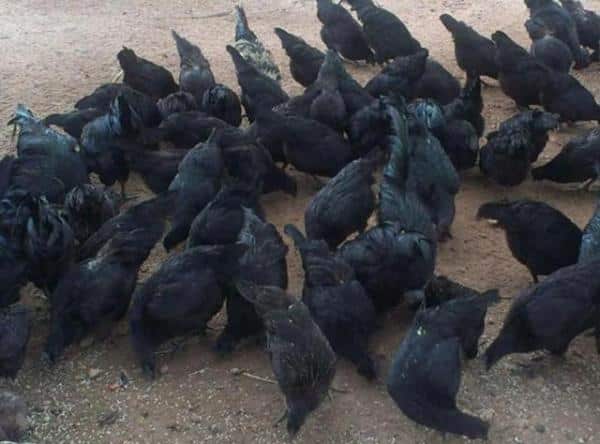
In commercial breeding and farming, they can be given pre-starter broiler feed with maize crumbs in the first two-month period. 20% protein diet can be given to birds once they cross two months. One can start feeding the birds with broiler starter feed followed by a regular feed depending upon the body weight and age. They eat a variety of foods from market waste to leafy vegetables, grass and etc, In open range farming, they know what they want and start feeding on small insects, seeds, grass, and other things.
| Ingredients | Brooder mash (0-8 weeks) in grams | Grower mash (9-19 weeks) in grams | Layer mash (20-72 weeks) in grams |
| Maize | 59.00 | 40.00 | 57.00 |
| Bajra | – | 10.00 | – |
| DORB | 4.00 | 23.80 | 5.00 |
| Soya Meal | 24.50 | 10.70 | 14.40 |
| Sunflower Meal | – | 7.00 | 7.00 |
| Fish meal | 10.00 | 6.00 | 9.00 |
| Mineral mixture | 2.00 | 2.00 | 2.00 |
| Shell grit | – | – | 5.00 |
| Salt | 0.50 | 0.50 | 0.50 |
| Methionine | – | – | 0.10 |
Kadaknath Chicken Farming Project Report – Housing Management in Kadaknath Chicken Farming Business:
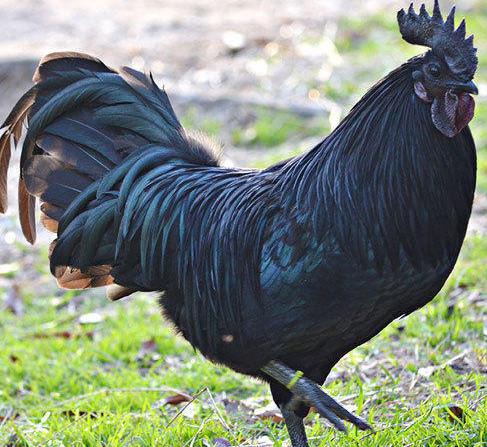
For optimum Kadaknath breeding and for-profits, Kadaknath housing must have a room temperature of 20° to 26° C and with 50% to 70% humidity. Birds can survive well in temperatures between 16° to 35°C. Kadaknath chicken is housed or reared in a litter system or in cages. Sheds must be free from natural predators such as cats, dogs, snakes, predatory birds, and rats. Shed and surrounding areas must be free from flies and mosquitoes. Sheds must-have comfortable housing conditions along with adequate light and proper ventilation during all seasons. Before introducing chicks in the deep litter system, disinfect all watering equipment, feeders, and brooding equipment, spread around 2 to 4-inch clean litter material such as sawdust, wood shavings, chopped straw, and paddy husk on the floor. The floor must be flat with no sharp protruding objects or rocks. Sheds length can be of any size with a width not more than 30 feet wide. The center of the shed height can be from 10 to 15 feet in height and the sides should be 8 to 10 feet in height. Two-thirds of the side walls must be open with wire mesh and avoid side walls in a cage system. In the cage system, the height of the shed can 10 to 20 feet high and the height can vary depending upon the cage tier arrangement. The flooring of the house or shed must be cement concrete. This will reduce disease problems and help in easy disinfection, maintenance, and cleaning, Depending on the farmer’s budget, the poultry roof of the shed can be made of straw, coconut leaf or Palmyra leaf, asbestos, plastic, or fiberglass, etc.
Kadaknath Chicken Farming Project Report – Brooder House:
Prepare the brooder house by disinfecting before the chicks are introduced. Place cardboard of 16 inches height and 6 feet in diameter making a brooding area for the chicks to stay inside. Inside the brooding area cover the floor with several inches of dry husk, sawdust, or peat moss. The brooding area or brooder house should be shielded from direct sunlight. For every 100 chicks require 250 W infrared lamps to keep the chicks warm. Divide the infrared lamps in such a way each brooding house will have one light bulb. Avoid heating the air or the room temperature, but just the brooding area where the chicks stay. Each chick of one to eight days old must have six to seven inches of free space in the brooding house. Supply feed and water as soon as the chicks are introduced or arrived.
Kadaknath Chicken Farming Project Report – Grower House:
Grower house is used to house egg-laying type birds of ages between 9 to 20 weeks old. Prepare the grower house by cleaning and disinfecting the place. The grower house must be clean and dry before the birds are introduced. Flooring must be spread with about 4-inch litter material. Place sufficient waterer and feeders, grower house must have sufficient floor space, feeding space, and water space for the birds to move around. To avoid diseases like coccidiosis, follow good litter management. The proper natural lighting of about 12 hours must be provided and no artificial light is required.
Read this: Broiler Chicken Farming Project Report.
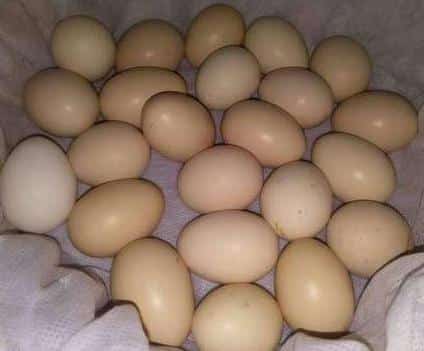
Kadaknath Chicken Farming Project Report – Egg Incubation in Kadaknath Chicken Farming Business:
Kadaknath hen reaches maturity and starts laying eggs from the sixth month onward. The hen lays eggs in two to three clutches, eggs are laid in two to three clutches with each clutch producing 25 to 40 eggs; thus, giving about 100 to 120 eggs in a year. Kadaknath hens are poor brooders. Losing one egg without hatching will be a big loss, ensure maximum hatching takes place; hence, collect all the eggs for artificial incubation and hatching. Provide sufficient nest boxes for hens to lay eggs to avoid lying on the floor. Farmers must collect eggs at least four times a day with clean and sanitized hands; this will help reduce egg contamination and microbial load. Eggs that are cracked or misshapen are not good for hatching and also very small or large eggs do not hatch well. Eggshells that are thin or porous do not hatch as well.
The five important factors for successful incubation and hatching of eggs include Temperature, Humidity, Ventilation, the position of the eggs, and turning of eggs. Temperature is the most critical concern during incubation. At physiological zero temperature, which means the temperature where embryonic growth starts developing, should be over 24°C, and below this temperature, the embryonic growth is arrested. Maintain a temperature of 37.5°C for about the first 18 days and during the hatching period or last three days about 36.9°C.
Relative humidity during the first 18 days during incubation ranging between 55 to 60% and during the hatching period ranging between 65 to 75% this because to avoid dehydration of chicks. Fresh oxygen is required for the respiration of developing embryos; hence, good ventilation is important during the incubation and hatching period. 5% reduction of hatching is observed for every 1% drop in oxygen. Carbon dioxide, which gets released through the shell during embryonic development should be maintained between 0.3 to 0.5% to avoid the reduction in hatchability. Place the large end of the egg up for the first 18 days, as the head of the chick develops at the large end of the egg near the air cell. While during the hatching period or the last three days, place the egg’s horizontal position, when the chick is ready to hatch its beak cannot break into the air cell to initiate pulmonary respiration. There are commercial incubators that turn the eggs automatically every hour, a minimum of eight times a day the eggs need to be turned to reduce embryo mortality.
Read this: Hydroponic Fodder For Dairy, Goats, Poultry, Livestock.
Care Management in Kadaknath Chicken Farming Business:
Newborn Chicks Care:
Chicks that are hatched must be placed in a clean and dry brooder. The brooding area must be maintained with a temperature between 35 to 37.5° C until they are fully feathered. Reduce the temperature gradually by 2.5° C every week until they are a month old.
Diseases in Kadaknath Chicken:
This breed can tolerate summer heat and cold winter stress and thrives well under limited food resources and minimal management conditions. The birds are hardy and exhibit an appreciable degree of resistance to diseases compared to other poultry birds and exotic fowl breeds. Avoid overcrowding of chicks or birds in the brooder shed to prevent coccidiosis disease.
Marketing In Kadaknath Chicken Farming Business:
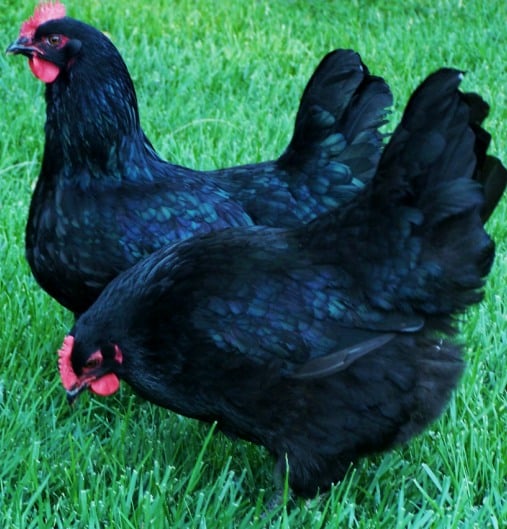
For the Kadaknath chicken farming business to be successful and to run in profits, it must have the best marketing strategies. Advertising plays another important role in this business. Educate local customers about the health benefits and the importance of consumption of Kadaknath egg and meat products that provide more essential vitamins, amino acids, nutrients, and protein to the human body through leaflets or banners in retail stores. Promote your products through online business and create awareness through social media. Madhya Pradesh State has launched a special mobile app “MP Kadaknath” for bird sale and connects with other poultry from other parts of the country. Individuals and commercial farmers can place orders for Kadaknath chicken from anywhere. The early months must be spent in promoting and marketing the products in the local regions which will lead to expanding your business and clientele. The other traditional promotions include advertisement in a local newspaper, posters, and flyers which are effective marketing methods to increase business and revenues.
Read this: 10000 Layer Farming Project Report.
Economics in Kadaknath Chicken Farming Business – Kadaknath Chicken Farming Project:
This project report is to give entrepreneurs an overview of investment and revenues and is not an actual revenue generation but for a business understanding.
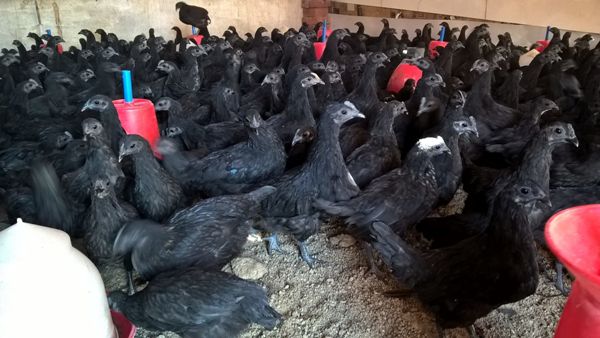
Cost and profit analysis of Kadaknath Chicken unit of 500 birds:
Kadaknath Chicken Farming Project Report – Capital Cost:
Shed Construction (3sheds x (60 x 30 ft)) = Rs. 50,000/-
(Minimal local materials used)
Kadaknath Chicken Farming Project Report – Recurring Cost:
500 Chicks (one week old) @ 35 per chick = Rs. 17,500/-
Company Feed (15 quintals) = Rs. 18,000/-
Home Feed (17.5 quintals) = Rs. 15,500/-
Medicines = Rs, 1,500/-
Total Recurring Cost = Rs. 52,500/-
Income A: From Birds (mortality 15 birds):
Sale of 35 birds after 5 months @ 200 per bird = Rs.7, 000/-
Sale of 120 birds after 6 months @ 400 per bird = Rs.48, 000/-
Sale of 180 birds after 7 months @ 400 per bird = Rs.72, 000/-
Sale of 150 birds after 8 months @ 400 per bird = Rs.60, 000/-
Income B: From Eggs (each bird laying 105 p.a):
Total Eggs Produced: 450
Eggs for Incubation: 200 = Rs. 3,000/-
Sale of 250 eggs @ 15 each egg = Rs. 3,750/-
Kadaknath Chicken Farming Project Report – Total Income (A+B) = Rs. 1, 93,750/-
Kadaknath Chicken Farming Project Report – Net Profit (Income – Recurring Cost) = Rs. 1, 93,750 – 52,500 = Rs. 1, 41,250/-
On average from the sixth month onward, every month a farmer can make a profit of about Rs. 50,000/- after all farm running expenditure in the wholesale market and almost more than double profit in retail sales. Kadaknath cockerel is sold anywhere between Rs. 750 to 1500/- during festival season.
Advantages of Kadaknath Chicken:
- The black chicken is rich in antioxidant properties.
- Kadaknath meat prevents in muscular degeneration thereby protects eyesight.
- Rich source of essential amino acids, Vitamin B, Vitamin A, Vitamin E, Minerals, etc.
- Low in Cholesterol, good for older people suffering from heart diseases.
- Is a source of Iron and prevents the risks of anemia.
- Promotes strong bones and body metabolism has a rich source of Phosphorus and Calcium.
- Helps in muscle formation and regulates blood vessel flexibility as it has 18 essential amino acids that a human body requires.
- Promotes women’s health with regular menstruation and fertility.
- Increases the blood flow and acts as an aphrodisiac.
- The hardy bird survives in all environmental conditions and thrives well in poor feeding conditions.
Why Kadaknath Chicken Expensive:
A selectively bred broiler chicken lays about 300 to 320 eggs per year, while a Kadaknath hen will lay anywhere between 95 to 120 eggs per year. With the same amount of feed, it is obvious the Kadaknath eggs are expensive. Broiler chicken tends to eat and eat getting obese within 45 days as their genes are selectively chosen to produce body mass and tend to die soon due to obesity. Whereas it takes a year for a Kadaknath cockerel to reach 1.5 kg and reaches a maximum weight of about 2.0 kg; the bird has a lifespan of about 12 years. Considering the growth and feed consumption and importantly the distinctive health benefits from its consumption and scarcity of the bird; it is obvious the pricing of Kadaknath chicken to be expensive.
Kadaknath Chicken Farming Project Report Conclusion:
Kadaknath chicken farming is a profit-earning business and provides job opportunities directly and indirectly to many people. Kadaknath breed farming is a simple business for its low maintenance and quality byproducts. Kadaknath eggs are rich in nutrients, vitamins, and protein and meat are one of the healthy poultry products having an array of health benefits. It is estimated that a tribal family makes about Rs.5, 000/- per year on one Kadaknath bird. Entrepreneurs and existing poultry farmers will be able to get a high return on investment.
In case if you are interested in this: Quail Farming Business Plan.
- How to Make Houseplants Bushy: Effective Tips and Ideas
- Innovative Strategies for Boosting Coconut Pollination and Yield
- Pollination Strategies for Maximum Pumpkin Yield
- The Complete Guide to Chicken Fattening: Strategies for Maximum Growth
- Natural Solutions for Tulip Problems: 100% Effective Remedies for Leaf and Bulb-Related Issues
- Revolutionizing Citrus Preservation: Towards a Healthier, Greener Future
- Natural Solutions for Peony Leaf and Flower Problems: 100% Effective Remedies
- Maximizing Profits with Avocado Contract Farming in India: A Comprehensive Guide
- Natural Solutions for Hydrangea Problems: 100% Effective Remedies for Leaf and Flowers
- The Ultimate Guide to Choosing the Perfect Foliage Friend: Bringing Life Indoors
- From Sunlight to Sustainability: 15 Ways to Use Solar Technology in Agriculture
- The Ultimate Guide to Dong Tao Chicken: Exploring from History to Raising
- The Eco-Friendly Makeover: How to Convert Your Unused Swimming Pool into a Fish Pond
- Mastering the Art of Delaware Chicken Farming: Essentials for Healthy Backyard Flocks
- 20 Best Homemade Fertilizers for Money Plant: DIY Recipes and Application Methods
- How to Craft a Comprehensive Free-Range Chicken Farming Business Plan
- Brighten Your Flock: Raising Easter Egger Chickens for Beauty and Bounty
- How to Optimize Your Poultry Egg Farm Business Plan with These Strategies
- Subsidy for Spirulina Cultivation: How Indian Government Schemes Encouraging Spirulina Farmers
- Ultimate Guide to Raising Dominique Chickens: Breeding, Feeding, Egg-Production, and Care
- Mastering the Art of Raising Jersey Giant Chickens: Care, Feeding, and More
- Ultimate Guide to Raising Legbar Chickens: Breeding, Farming Practices, Diet, Egg-Production
- How to Raise Welsummer Chickens: A Comprehensive Guide for Beginners
- How to Protect Indoor Plants in Winter: A Comprehensive Guide
- Ultimate Guide to Grow Bag Gardening: Tips, Tricks, and Planting Ideas for Urban Gardeners
- Guide to Lotus Cultivation: How to Propagate, Plant, Grow, Care, Cost, and Profit
- Agriculture Drone Subsidy Scheme: Government Kisan Subsidy, License, and How to Apply Online
We interested, please advise for farming of Kadakanath Chicken.
The project report has everything. Did you read it?
I am interested in Kadaknath Chicken Farming. So please provide me each and every information regarding this project.
The project report explains everything, what else you need?
Am interested in Kadaknath poultry farming. Please provide me complete information about Kadaknath farming.
Read: KADAKANTH CHICKEN BREED PROFILE.
I am Interested in this Project i have 5000 squre feet land and ready for this project immediately.
kadaknath-chicken-farming-project-report/
1000+ can be purchase small burds and started
please share more details .
Kindly share the name of companies or address of farms to purchase kadaknath birds to start. Is there any company which is doing business in buy back back scheme?
Dear Sir,
Thanks for all the info, Appreciate it.
I have a large cattle shed sizing around 3000 sqft, now no more cattle more than 2 years now I plan do something so I intend to put caged size of 50 chickens and another cage for another breed of chicken of 50 nos
So the question is can kadaknath chicken can put grown and feed in smart caged and another Giriraj or Grama Priya 50 nos into another caged.
Please advice if this feasible and what will be yield and profits if all goes fine, I will expand to 500 to 1000
Well, we personally prefer country chicken as the these chickens have good demand and no need to worry about marketing. Where as Kadaknath and Giriraja has less market demand. Though we hear a lot about Kadaknath (black chicken).. It is a little tough to market on a commercial scale. Grama Priya would be fine as this can be as same as country chicken. Only the first month requires to be under lights for Grama Priya just like broiler. After that that can be outside just like country chickens. Gram Priya lays more eggs than country hen.
Thanks
I plan to use multi layer caged model place inside shed for these chickens – ( grama Priya and Black chickken) ,reason is shortage of manpower and I can have more control
Pl advice
I am interested . I have also a firm where 6000 birds grow up . Plz advice me how I start there kadagnath..???
As demand is not that high for Kadaknath as people are not that aware of this poultry bird. However, before starting a commercial Kadakanth Chicken farming, make sure to set up a contract farming or marketing channel.
Hello,
Your website is very interesting, thank you
I’m in France and i make a business plan for farming kadaknath in India. Do you have any curve about quantity of feed, taking weight and water consumption on 3 months growth ? Or a data sheet or anything else ? (The feed being the most important load, i wish to calculate at best this post.
We have land & are establishing a branded marketing network for Kadaknath & are exploring possibilities of Vedic Permaculture around Mumbai, in Maharashtra. Anyone wishes to collaborate, invest or support as vendor, consultant, educator is welcome. Once the enterprise is set up we wish to support farmers from Maharashtra in marketing of their products. Our key mission is to support agro & livestock farming & farmers in comparatively dry areas.
livealittlesocial@gmail.com
Is there any kadaknath contract farming company available in Karnataka or near Bangalore, please suggest me I’m really interested in this farming business.
I am unable to download the project, plz give me download link.
Dear sir,
I am from West Bengal, I want to take a kadaknath agency/distributorship from Madhya Pradesh governmet for the north-east region(Basically East Medinipur,West Medinipur Bankura,Purulia). We have numbers of SHGs and Society. What is the criteria. Please suggest me, we are highly interested about it.
SANDIPAN MAITY
All is well but where do we have to sell the bird once grown up. It is becoming difficult to find the buyer. Pls help.
From where can i buy chicks. Please provide authenticated information.
Dear Sir,
Please give me the information how many chicks are died in time of chicks are growing with different scenario
In Kedarnath chicken farming, there is less mortality rate compared to broiler/layer chickens due to its disease resistance.
sir
i need your assistance in preparing project report on layer ( country chicks) kindly help
Although the villages are officially electrified, the quality of electricity is poor. The voltage fluctuates frequently from 90V – 300V. Power outages are common.
The Kadaknath incubation process is very sensitive as the temperature has to be maintained for 21 days during the whole incubation period. Any change in temperature, even for a short period will destroy the 21 days cycle. The grid electricity in the rural areas is not suitable for the incubators.
For proper and optimal production of hatching Kadaknath eggs, a fully off-grid solar based incubator is an ideal solution in rural areas.
24 hour steady lighting is required for growing chicken from the chicks. The existing grid power does not support this presently. Solar lighting is the best solution for this process.
Our company Pushan Renewable Energy Private Limited based at Indore Madhya Pradesh is providing solar solutions (for 24 x7 uninterrupted power supply) along with egg incubators for these projects. If interested, write down to us at pushanind@gmail.com
Best Regards,
Samarth
sir i am intrested sir my farm area 11000 squrefeet i am agre in work from vidisha m.p
Hlw we have farm also in haydrabaad amd we have 3lac capacity currntly we have stock 2lac chicks of kadknath and egg production 10thousand per day big birds 50000 weight its 1.4 to 1.5 1.7kg
Im wholeseller price if you want to work with us so we happy to work with you if anywant to interest pls call or whatshp me
8420520229 we are provide in all over india
Please give an idea to farming kedaknath chicken in odisha bhubaneswar, i have an shed at my residence for making an farm of kadaknath chicken
Dear Khan,
we are into kadaknath farming in a big scale , from Bangalore- Karnataka.
i will get in touch with you for further discussion.
Is their any body near Kallakurchi vilupouram pls contact me on I need to start it
Thanks
skharahim@gmail.com
Can I get kadaknath chiks Near me
Sir I am planning to start kadaknath farming in large scale so plz provide me the information regarding global marketing for kadaknath chicken and eggs
Sir,
I am planning to start kadaknath farming, so please provide me the information regarding below
1) How much space is required for 500 birds.
2) Where can I get the kadaknath chicks and their feed as well as medicines.
3)Marketing source for the above in my area – Basheerabagh village, Kamarpally Mandal, Nizamabad district, Telangana.
4)Can I avail any subsidy/loan from central/state government as I am ex-serviceman.
5)Do I need to take any prior approvals from the government. (If yes, please share the details)
Thankyou
I am interested and wants to start business. Pl send me marketing detail.